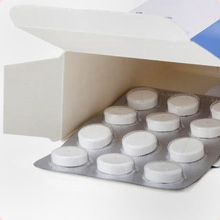Categories
- Alternative medicines
- Anti-infectives
- Antineoplastics
- Biologicals
- Cardiovascular agents
- Central nervous system agents
- Coagulation modifiers
- Gastrointestinal agents
- Genitourinary tract agents
- Hormones
- Immunologic agents
- Medical gas
- Metabolic agents
- Miscellaneous agents
- Inactive Ingredients
- Nutritional products
- Plasma expanders
- Psychotherapeutic agents
- Radiologic agents
- Respiratory agents
- Topical agents
- Uncategorized
This medication is used to treat dry eyes due to a certain type of eye condition (keratoconjunctivitis sicca). It works by increasing the amount of tears you make.
How to use cyclosporine Opht
This medication is applied to the affected eye(s) usually twice a day, about 12 hours apart; or as directed by your doctor.
To apply eye drops, wash your hands first. To avoid contamination, be careful not to touch the tip of the vial or let it touch your eye. Before opening the vial, make sure the eye drops are well mixed by turning the vial upside down several times before use. Open the vial right before you are about to use it. The eye drops should have a milky, white appearance.
Tilt your head back, look upward and pull down the lower eyelid to make a pouch. Place the tip of the vial directly over the eye and apply 1 drop. Look downward and gently close your eye for 1 to 2 minutes. Try not to blink and do not rub the eye.
Discard the remaining contents of the opened vial immediately after use. Do not store the opened vial for later use.
If you wear contact lenses, remove them before using this medication and do not replace them until 15 minutes following use of these eye drops.
If you are also using other drops for dry eyes (e.g., artificial tears), wait 15 minutes between use of the different products.
Burning, stinging, redness, pain, or itching of the eye may occur. Blurred vision, feeling as if something is in the eye, or eye discharge may also occur. If any of these effects persist or worsen, notify your doctor or pharmacist promptly.
Remember that your doctor has prescribed this medication because he or she has judged that the benefit to you is greater than the risk of side effects. Many people using this medication do not have serious side effects.
An allergic reaction to this drug is unlikely, but seek immediate medical attention if it occurs. Symptoms of an allergic reaction include: rash, severe itching/swelling (especially of the face/tongue/throat), dizziness, trouble breathing.
This is not a complete list of possible side effects. If you notice other effects not listed above, contact your doctor or pharmacist.
In the US -
Call your doctor for medical advice about side effects. You may report side effects to FDA at 1-800-FDA-1088.
In Canada - Call your doctor for medical advice about side effects. You may report side effects to Health Canada at 1-866-234-2345.
Before using this medication, tell your doctor or pharmacist if you are allergic to it; or if you have any other allergies. This product may contain inactive ingredients, which can cause allergic reactions or other problems. Talk to your pharmacist for more details.
This medication should not be used if you have certain medical conditions. Before using this medicine, consult your doctor or pharmacist if you have: an eye infection.
Before using this medication, tell your doctor or pharmacist your medical history.
This drug may cause blurred vision. Do not drive, use machinery, or do any activity that requires clear vision until you are sure you can perform such activities safely.
This medication should be used only when clearly needed during pregnancy. Discuss the risks and benefits with your doctor.
It is not known whether this drug passes into breast milk. Consult your doctor before breast-feeding.
Your doctor or pharmacist may already be aware of any possible drug interactions and may be monitoring you for them. Do not start, stop, or change the dosage of any medicine before checking with them first.
Before using this medication, tell your doctor or pharmacist of all prescription and nonprescription products you may use, especially of: other eye drops or ointments.
This document does not contain all possible interactions. Therefore, before using this product, tell your doctor or pharmacist of all the products you use. Keep a list of all your medications with you, and share the list with your doctor and pharmacist.
If overdose is suspected, contact your local poison control center or emergency room immediately. US residents can call the US national poison hotline at 1-800-222-1222. Canadian residents should call their local poison control center directly. This medicine may be harmful if swallowed.
NOTES:
Do not share this medication with others.
MISSED DOSE:
If you miss a dose, use it as soon as you remember. If it is near the time of the next dose, skip the missed dose and resume your usual dosing schedule. Do not double the dose to catch up.
STORAGE:
Store at room temperature between 59-77 degrees F (15-25 degrees C) away from light and moisture. Do not store in the bathroom. Keep all medicines away from children and pets.
Do not flush medications down the toilet or pour them into a drain unless instructed to do so. Properly discard this product when it is expired or no longer needed. Consult your pharmacist or local waste disposal company for more details about how to safely discard your product.
Information last revised May 2010. Copyright(c) 2010 First Databank, Inc.


